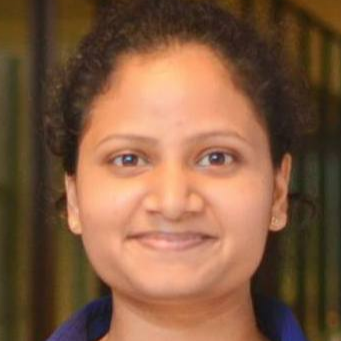International Journal of Information Technology and Computer Science (IJITCS)
IJITCS Vol. 10, No. 3, 8 Mar. 2018
Cover page and Table of Contents: PDF (size: 597KB)
A Novel Musculoskeletal Imbalance Identification Mechanism for Lower Body Analyzing Gait Cycle by Motion Tracking
Full Text (PDF, 597KB), PP.27-34
Views: 0 Downloads: 0
Author(s)
Index Terms
Gait cycle, Imbalance, musculoskeletal system, Graph comparison
Abstract
Muscles in a human body consists of a pair. Musculoskeletal imbalances caused by repetitive usage of one part of the muscle in this pair and incorrect posture a human body takes on regular basis lead to severe injuries in terms of neuro musculoskeletal problems, hamstring strains, lower back tightness, repetitive stress injuries, altered movement patterns, postural dysfunctions, trapped nerves and etc. and both neurological and physical performances are severely affected when time progresses. In clinical domain, muscle imbalances are determined by gait and posture analysis, Movement analysis, Joint range of motion analysis and muscle length analysis which require expertise knowledge and experience. X-Rays and CT scans in the medical domain also require domain experts to interpret the results of a checkup. Kinect is a motion capturing device which is able to track human skeleton, its joints and body movements within its sensory range. The purpose of this research is to provide a mechanism to identify muscle imbalances based on gait analysis tracked via Kinect motion capture device by differentiate the deviation of healthy person’s gait patterns. Primarily, the outcome of this study will be a self-identification method of human skeletal imbalance.
Cite This Paper
Hiranthi Tennakoon, Charitha Paranamana, Maheshya Weerasinghe, Damitha Sandaruwan, Kalpani Mahindaratne, "A Novel Musculoskeletal Imbalance Identification Mechanism for Lower Body Analyzing Gait Cycle by Motion Tracking", International Journal of Information Technology and Computer Science(IJITCS), Vol.10, No.3, pp.27-34, 2018. DOI:10.5815/ijitcs.2018.03.04
Reference
[1]A. Pourmoghaddam, M. Dettmer, D. O’Connor, W. Paloski and C. Layne, "Identification of Changing Lower Limb Neuromuscular Activation in Parkinson’s Disease during Treadmill Gait with and without Levodopa Using a Nonlinear Analysis Index", Parkinson's Disease, vol. 2015, pp. 1-8, 2015.
[2]S. Perumal and R. Sankar, "Gait and tremor assessment for patients with Parkinson’s disease using wearable sensors", ICT Express, vol. 2, no. 4, pp. 168-174, 2016
[3]Wan, Bingjun and Gongbing Shan. "Biomechanical Modeling As A Practical Tool For Predicting Injury Risk Related To Repetitive Muscle Lengthening During Learning And Training Of Human Complex Motor Skills". (2016): n. pag. Print.
[4]M. Hägglund, M. Waldén and J. Ekstrand, "Risk factors for lower extremity muscle injury in professional soccer: the UEFA Injury Study.", 2012. 23 Mar. 2017.]
[5]N. MILLER, O. JENKINS and M. KALLMANN, "MOTION CAPTURE FROM INERTIAL SENSING FOR UNTETHERED HUMANOID TELEOPERATION", 2004. 04.05.2017
[6]Preis, Johannes, Moritz Kessel, and Martin Werner. "Gait Recognition With Kinect." researchgate.net (2017): 1-4. Web. 18 July 2017.
[7]Springer, Shmuel, and Galit Yogev Seligmann. "Validity Of The Kinect For Gait Assessment: A Focused Review." semanticscholar (2016): n. pag. Web. 18 July 2017.
[8]’Hugglund, Martin and Markes Walden. "Risk Factors For Lower Extremity Muscle Injury In Professional Soccer". Risk Factors for Lower Extremity Muscle Injury in Professional Soccer (2017): n. pag. Web. 13 Mar. 2017.
[9]T. ANDRIACCHI, M. HENRIKSEN and T. GRAVEN-NIELSEN, "Gait Changes in Patients With Knee OsteoarthritisAre Replicated by Experimental Knee Pain", Research Gate, vol. 62, no. 4, 2010.
[10]R. Bajcsy, "Analysis of the Effect of Cognitive Load on Gait with off-the-shelf Accelerometers", Research gate, 2017.
[11]C. Groner, "Diabetes and altered gait: The role of neuropathy | Lower Extremity Review Magazine", Lermagazine.com, 2017.
[12]J. Brach, J. Talkowski, E. Strotmeyer and A. Newman, "Diabetes Mellitus and Gait Dysfunction: Possible Explanatory Factors", Physical Therapy, vol. 88, no. 11, pp. 1365-1374, 2008.
[13]L. Allet, S. Armand, R. de Bie, A. Golay, D. Monnin, K. Aminian, J. Staal and E. de Bruin, "The gait and balance of patients with diabetes can be improved: a randomised controlled trial", Diabetologia, vol. 53, no. 3, pp. 458-466, 2009.
[14]D. Roetenberg, H. Luinge and P. Slycke, "Xsens MVN: Full 6DOF Human Motion Tracking Using Miniature Inertial Sensors", XSENS TECHNOLOGIES, 2003.
[15]A. Atrsaei, H. Salarieh and A. Alasty, "Human Arm Motion Tracking by Orientation-Based Fusion of Inertial Sensors and Kinect Using Unscented Kalman Filter", 2017.
[16]I. Oikonomidis and N. Kyriazis, "Efficient Model-based 3D Tracking of Hand Articulations using Kinect", 04.05.2017.
[17]Frank, Lardner and Page, “The assessment and treatment of muscular imbalance,” The Janda Approach Hardback, Human Kinetics, Champlain, IL USA.
[18]Kenyon, Karen and Kenyon, Jonathan. The Physiotherapist's Pocket Book - Essential Facts At Your Fingertips. 2nd ed. Kundli (Haryana): Rajkamal Electric Press, 2017. Print.
[19]A. Fernandez, A. Susin and X. Lligadas, Biomechanical Validation of Upper-body and Lower-body Joint Movements of Kinect Motion Capture Data for Rehabilitation Treatments, 2012.
[20]I. Oikonomidis and N. Kyriazis, "Efficient Model-based 3D Tracking of Hand Articulations using Kinect", 04.05.2017
[21]Preis, J., Kessel, M., Werner, M. and Linnhoff-Popien, C. (2012). Gait recognition with Kinect. ResearchGate
[22]K. Culhane, "Accelerometers in rehabilitation medicine for older adults", Age and Ageing, vol. 34, no. 6, pp. 556-560, 2005.
[23]Orthopedic for rehabilitation
[24]E. Carmeli, S. Kessel, R. Coleman and M. Ayalon, "Effects of a Treadmill Walking Program on Muscle Strength and Balance in Elderly People With Down Syndrome", 2002. Web. 23 Mar. 2017.
[25]Han, J. and Bhanu, B. (2006). Individual Recognition Using Gait Energy Image. IEEE
[26]M. Y, S. J, A. R, H. ME and S. JJI, "Gait variability in people with neurological disorders: A systematic review and meta-analysis", 2016.
[27]“Gait Analysis in Neurological Disease”, Smart patients, 2016
[28]Stone, E. and Skubic, M. (2013). Unobtrusive, Continuous, In-Home Gait Measurement Using the Microsoft Kinect. IEEE, 60(10)
[29]K. Culhane, "Accelerometers in rehabilitation medicine for older adults", Age and Ageing, vol. 34, no. 6, pp. 556-560, 2005.
[30]M. Hägglund, M. Waldén and J. Ekstrand, "Risk factors for lower extremity muscle injury in professional soccer: the UEFA Injury Study.", 2012.]
[31]C. Lin, H. Hsu, Y. Lay, C. Chiu and C. Chao, "Wearable device for real-time monitoring of human falls", Measurement, vol. 40, no. 9-10, pp. 831-840, 2007.
[32]S. K. and M. M., Gait and posture - assessment in general practice. 2017.
[33]Wan, Bingjun and Gongbing Shan. "Biomechanical Modeling As A Practical Tool For Predicting Injury Risk Related To Repetitive Muscle Lengthening During Learning And Training Of Human Complex Motor Skills". (2016): n. pag. Print
[34]Knapik and C. Bauman, "Preseason strength and flexibility imbalances associated with athletic injuries in female collegiate athletes.", 1991.



